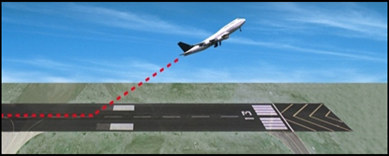
An atmospheric river will bring heavy rainfall to lower elevations of California this week, and heavy snow to the Sierra Nevada mountains. Flash flooding, some of which may be locally considerable, will be a concern on the western foothills of the Sierra Nevada mountains through Tuesday. Landslides, rockfalls and mudslides are possible in the Southern California mountains. Read More >
Density Altitude: The altitude in the standard atmosphere at which the air has the same density as the air at the point in question. An aircraft will have the same performance characteristics as it would have in standard atmosphere at this altitude.
High Density Altitude: A condition of the atmosphere that reduces an aircraft’s performance capability to below a level of standard performance at a specified altitude.
Cold, Dry Day Low Density Altitude |
Hot, Humid Day High Density Altitude |
Air density is determined by Pressure, Temperature, and Humidity.
On a hot, muggy day, the air becomes "thinner" or less dense, and its density at a pilot's location is equivalent to a higher altitude in the standard atmosphere. Thus the term "high density altitude."
Pilots must determine if high density altitude will impact their flight by calculating density altitude and checking their aircraft performance charts.